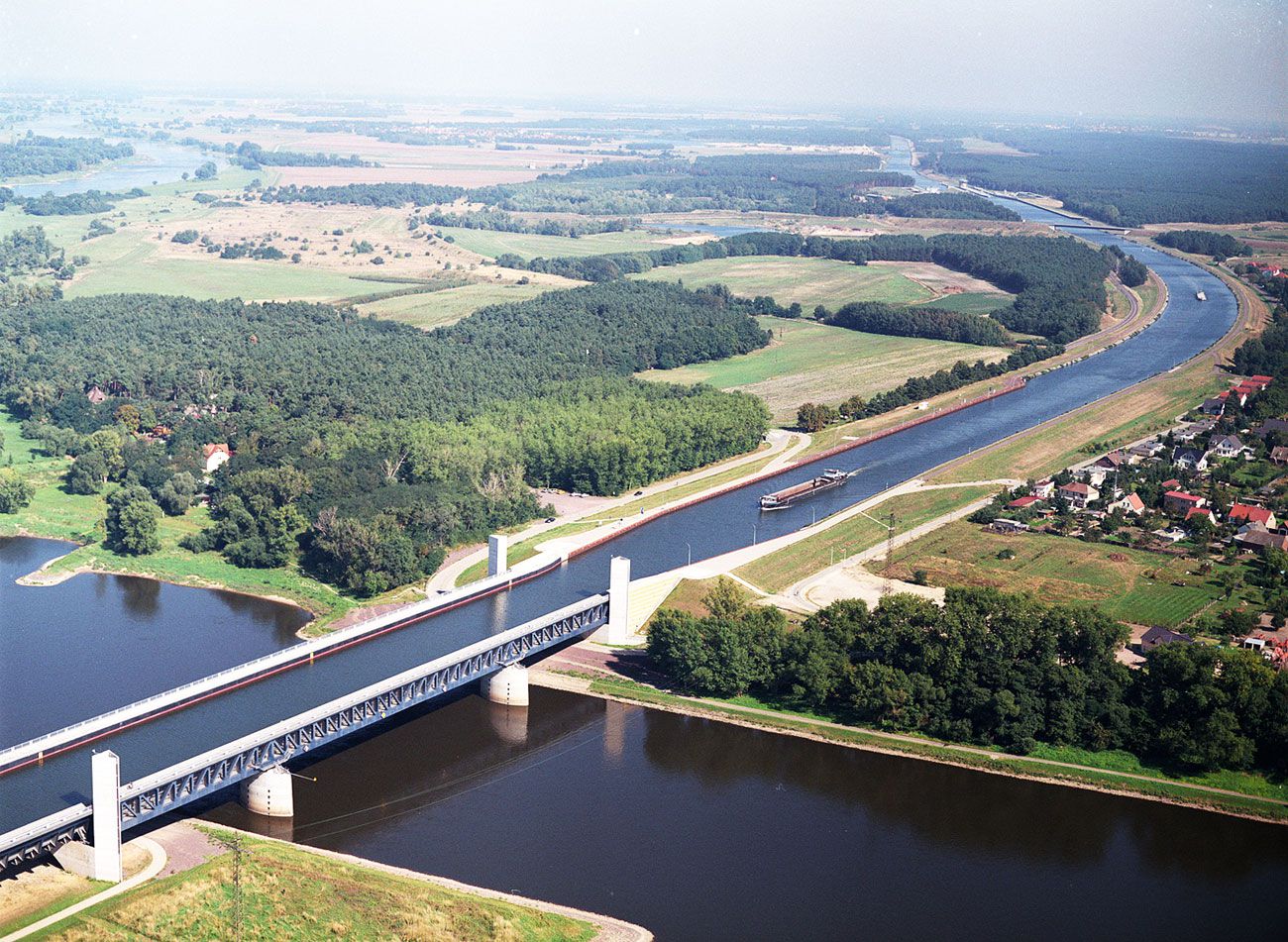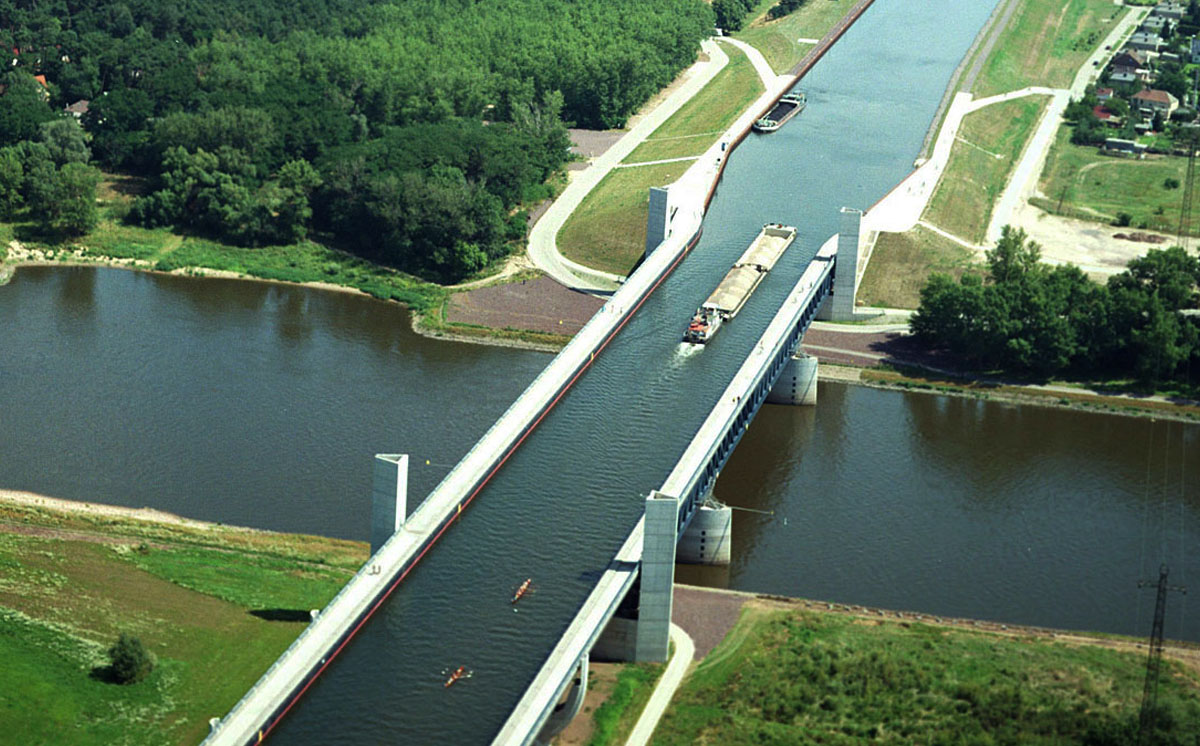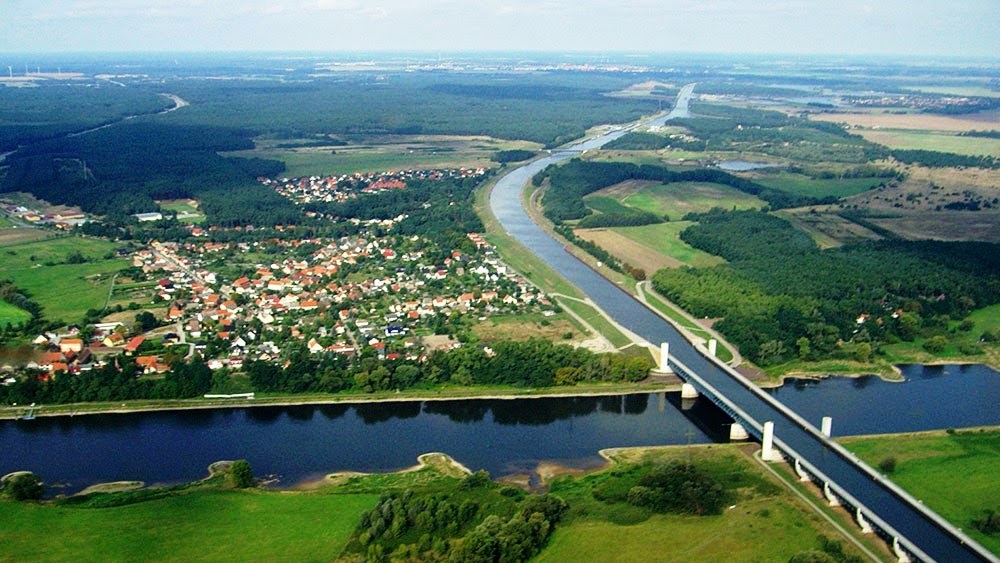The Magdeburg Water Bridge is a large navigable aqueduct in central Germany, located near Magdeburg. The largest canal underbridge in Europe, it spans the river Elbe and directly connects the Mittellandkanal to the west and Elbe-Havel Canal to the east of the river, allowing large commercial ships to pass between the Rhineland and Berlin without having to descend into and then climb out of the Elbe itself.

Planning for the canal crossing dates back to at least the beginning of the 20th century. Work on the Mittellandkanal began in 1905, while work on the overall project continued until 1942, when all construction was brought to a halt because of World War II.
It is the world’s longest navigable aqueduct. It connects the Elbe-Havel Canal to the Mittellandkanal, crossing over the Elbe River and has a total length of 918 metres (3,012 ft). The bridge was completed in 2003.

After the war, the government of East Germany did not resume work on the project because east-west trade was no longer important in the context of the Cold War. After the reunification of Germany, the reestablishment of major water transport routes made the water bridge a priority again.

Work started in 1998, with construction taking six years and costing €501 million. The water bridge now connects Berlin’s inland harbour network with the ports along the Rhine River. The aqueduct's tough structure incorporates 24,000 tons of steel and 68,000 cubic meters of concrete.
According to en.wikipedia & gcaptain.com











